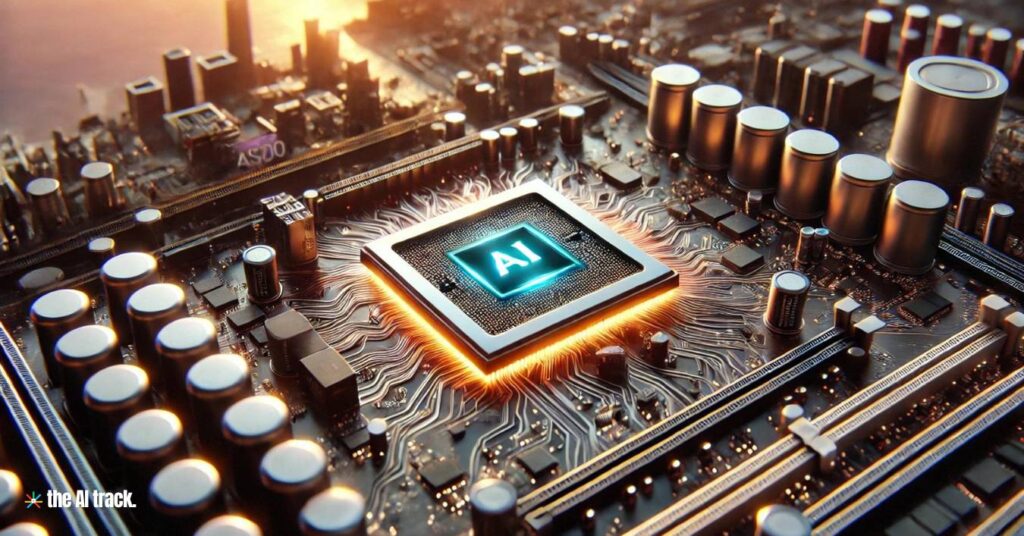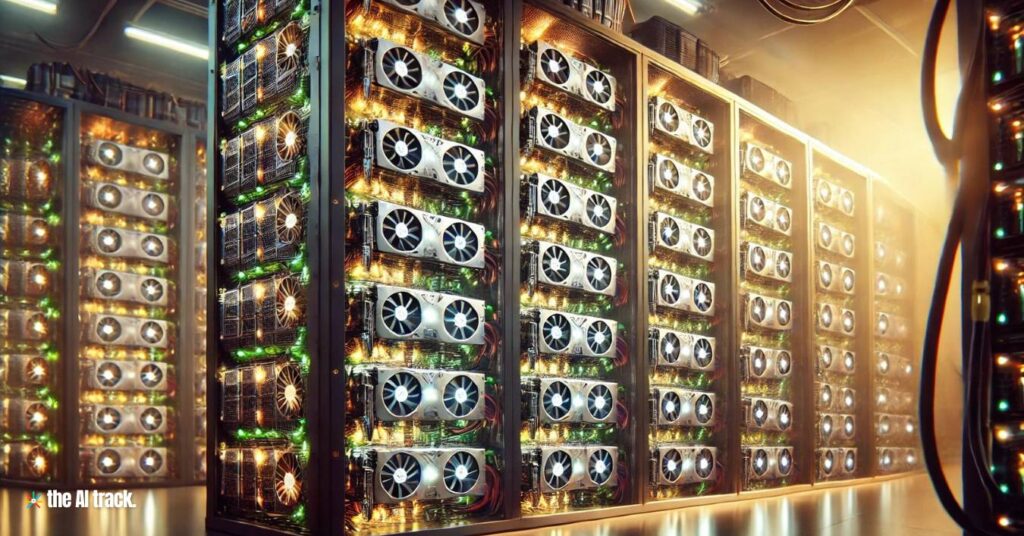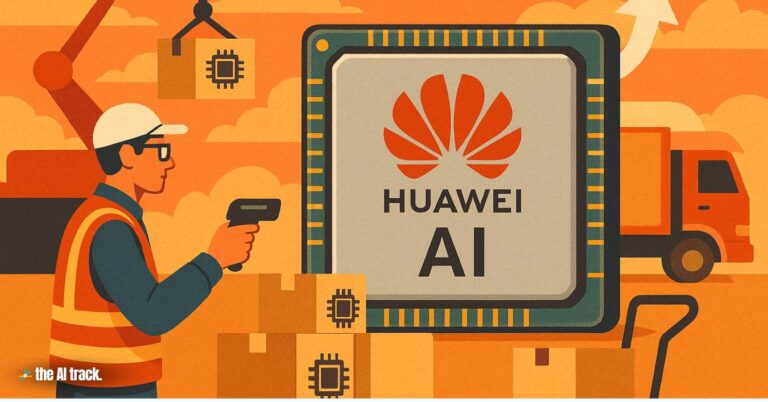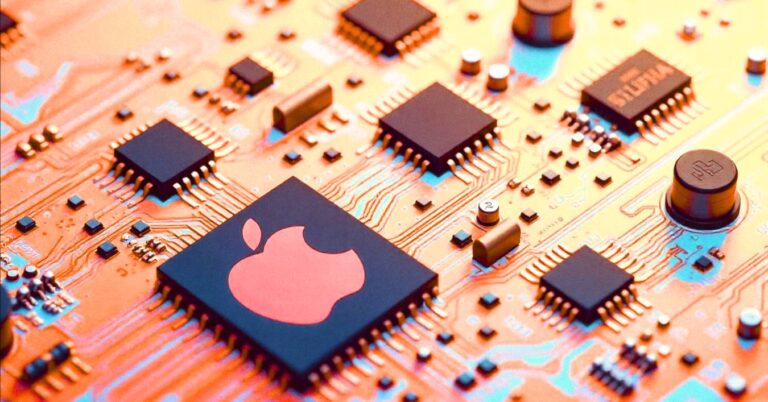AI Infrastructure: Key Components and Future Trends
Artificial intelligence (AI) is rapidly changing the technological landscape, driving innovation across various sectors such as healthcare, finance, and customer service. Underpinning this AI revolution is a critical but often overlooked element: AI infrastructure. This crucial backbone empowers organizations to develop, deploy, and manage AI projects effectively. Like the infrastructure of a city, AI infrastructure provides the essential foundation for AI to function and thrive.
This article will discuss the importance of AI infrastructure and explore its key components, including hardware, software, and networking elements. It will also examine the role of cloud computing in AI infrastructure and highlight some of the common challenges encountered when building this specialized environment.
Jump to Sections
I. Understanding AI Infrastructure

AI infrastructure encompasses the hardware, software, and networking elements required to build, deploy, and manage AI-powered applications and solutions. It serves as the foundation for machine learning algorithms to process large datasets and generate insights. This integrated environment is specifically designed for the demanding tasks of artificial intelligence and machine learning workloads.
AI infrastructure differs from traditional IT infrastructure in several key aspects:
- Specialized Hardware: AI infrastructure relies heavily on high-performance computing components like GPUs and TPUs, which are specifically designed to accelerate the parallel processing required for AI workloads. Traditional IT infrastructure typically relies on CPUs, which are not as efficient for these tasks.
- Cloud-Based Deployment: AI infrastructure often leverages cloud computing environments for their scalability, flexibility, and cost-effectiveness. Traditional IT infrastructure is often on-premise, which can limit scalability and increase costs.
- Software Stack: The software stack for AI infrastructure includes machine learning libraries and frameworks like TensorFlow, PyTorch, and Scikit-learn, along with programming languages like Python. This specialized software is tailored for AI/ML tasks and is not typically found in traditional IT infrastructure.
Why is AI Infrastructure Important?
AI infrastructure is crucial for organizations seeking to leverage the transformative power of AI. Here’s why:
- Efficient Execution of AI Tasks: AI infrastructure provides the necessary computational power and resources to efficiently execute complex AI tasks such as natural language processing and image recognition. The use of specialized hardware like GPUs and TPUs allows AI algorithms to process massive datasets quickly and efficiently.
- Scalability and Flexibility: AI projects often require significant computational resources, and the ability to scale these resources up or down as needed is critical. AI infrastructure, often built on cloud-based platforms, provides this scalability and flexibility, allowing organizations to adapt to changing demands without significant upfront investment.
- Support for the Entire AI Lifecycle: AI infrastructure supports the entire AI lifecycle, from development and training to deployment and continuous improvement. It provides a standardized environment for data scientists and ML engineers to collaborate, share resources, and build upon each other’s work.
- Enhanced Security and Compliance: As AI applications handle increasingly sensitive data, security and compliance become paramount. Robust AI infrastructure ensures the secure handling and processing of this data and helps organizations comply with relevant regulations and industry standards, minimizing legal and reputational risks.
- Innovation and Competitive Advantage: Ultimately, a well-designed AI infrastructure empowers businesses to innovate, create new market opportunities, and gain a competitive edge. It provides the foundation for developing and deploying cutting-edge AI solutions that can transform industries and drive business growth.

II. Key Components of AI Infrastructure
Hardware
A robust AI Infrastructure relies on a powerful hardware foundation to handle the demanding computational requirements of AI workloads. Here are some key hardware components:
- CPUs (Central Processing Units): While not as specialized as other AI hardware components, CPUs still provide the general-purpose processing power required for various AI tasks.
- GPUs (Graphics Processing Units): GPUs have become essential for accelerating complex model training due to their massively parallel processing capabilities, making them significantly faster than CPUs for handling the matrix and vector computations common in AI.
- TPUs (Tensor Processing Units): These specialized processors are custom-designed by Google to further accelerate machine learning tasks, particularly in the realm of deep learning. TPUs excel in high throughput and low latency operations, making them ideal for deep learning applications.
- ASICs (Application-Specific Integrated Circuits): ASICs represent a move towards even greater specialization. These chips are custom-designed and optimized for specific AI tasks, leading to improved efficiency and performance for those tasks. Google’s TPUs are an example of powerful ASICs designed for AI. One example is Sohu, an ASIC by Etched, specifically designed for running transformer models, which the developers claim can replace 160 Nvidia H100 GPUs in performance.
- FPGAs (Field-Programmable Gate Arrays): FPGAs offer a unique advantage in their reconfigurability. These chips can be programmed to efficiently execute specific AI workloads, providing flexibility and the potential for low-latency processing.
- Other AI-Specific Hardware: Beyond GPUs and TPUs, a range of specialized hardware caters to specific AI requirements:
- NPUs (Neural Processing Units): These processors are designed specifically to accelerate neural network computations, making them a common choice for mobile devices and edge computing platforms.
- VPUs (Vision Processing Units): VPUs excel in vision-based AI applications, optimizing the processing of images and video. They are commonly found in devices like cameras and drones.
- Edge AI Chips: This category of chips is designed for on-device AI processing, bringing intelligence to the edge of the network. These chips prioritize low power consumption and high performance, making them suitable for applications where data is processed locally, such as IoT devices, autonomous vehicles, and smart cameras. Nvidia’s Jetson series and Intel Movidius are prime examples of edge AI chips.
- AI Servers: As AI workloads become more demanding, traditional servers often fall short. AI servers are purpose-built systems designed to house and optimize the performance of AI hardware components. These servers often feature high-density configurations of GPUs, TPUs, and other accelerators, along with sophisticated cooling systems and high-bandwidth interconnects. Lenovo, Dell, Supermicro, Nor-Tech, and HPE are a few of the companies that offer servers designed for AI and machine learning workloads. AI servers are crucial for both training and inference, and their configurations often vary based on the specific requirements of the AI task.

Software:
- Machine Learning Frameworks: Frameworks like TensorFlow, PyTorch, and Scikit-learn are essential for AI infrastructure. They provide the tools and libraries necessary for designing, training, and validating machine learning models. These frameworks often support GPU acceleration to expedite computations.
- Data Processing Frameworks: AI infrastructure also relies on data processing frameworks like Apache Spark and Hadoop. These frameworks enable the efficient handling and transformation of large datasets, a crucial aspect of preparing data for AI applications.
- MLOps Platforms: MLOps platforms are integral to AI infrastructure, streamlining and automating the machine learning lifecycle. This includes managing model versioning, automating training and deployment pipelines, tracking model performance, and facilitating collaboration among data scientists, ML engineers, and operations teams.
Networking:
- High-bandwidth, low-latency networks, such as 5G, are vital for AI infrastructure. These networks enable rapid data transfer between storage and processing units, a critical requirement for AI systems that often deal with massive datasets.
- The network infrastructure plays a crucial role in supporting distributed AI workloads, ensuring smooth and efficient data flow between different components of the AI system.
Data Storage and Management:
- Databases: AI Infrastructure relies on databases to manage the vast amounts of data required for AI applications. SQL and NoSQL databases are commonly used to manage structured data.
- Data Warehouses: Data warehouses serve as centralized repositories for structured data used in AI applications. These warehouses are designed to handle large volumes of data and support complex queries, making them valuable for AI systems that require historical data analysis.
- Data Lakes: Data lakes provide a system for storing and analyzing vast amounts of raw, unstructured data. They are particularly useful for AI applications that deal with diverse data types, such as images, videos, and sensor data.
- Data management solutions in AI infrastructure need to address scalability, data quality, accessibility, and security. Ensuring data privacy and security is paramount, especially when dealing with sensitive data.
Security and Compliance:
- Data Security: Protecting sensitive data used in AI is paramount. AI Infrastructure employs encryption, access control, and data masking techniques to safeguard data throughout its lifecycle.
- Model Security: Safeguarding AI models from unauthorized access, theft, and adversarial attacks is crucial for maintaining the integrity and reliability of AI systems.
- Compliance: Adhering to relevant regulations, including data privacy and AI ethics guidelines, is essential for ensuring responsible AI development and deployment. Robust AI infrastructure incorporates mechanisms to enforce compliance and mitigate potential legal and reputational risks.

IV. The Role of Cloud Computing in AI Infrastructure
Cloud computing has emerged as a cornerstone of AI infrastructure, offering organizations a powerful and flexible platform to develop and deploy AI solutions. This section will discuss the reasons behind the integral role of cloud computing in AI infrastructure, and how this relationship fosters innovation in the field of artificial intelligence.
Advantages of Cloud Computing for AI Infrastructure:
- Scalability: Cloud computing offers unparalleled scalability, allowing organizations to easily adjust their computational resources to accommodate the dynamic demands of AI workloads. As AI initiatives evolve and require more processing power or storage, cloud resources can be seamlessly scaled up or down, ensuring optimal performance without the burden of investing in and managing physical infrastructure.
- Flexibility: Cloud service providers deliver a diverse range of services and tools explicitly designed for AI, catering to the specific requirements of various AI applications. This flexibility enables organizations to select the most appropriate services and tools for their AI projects, ranging from machine learning frameworks and data processing engines to pre-trained models and specialized AI accelerators.
- Cost-effectiveness: Cloud-based AI infrastructure presents a compelling value proposition by potentially reducing costs compared to on-premises solutions, especially for organizations with fluctuating workloads. The pay-as-you-go model of cloud services allows organizations to only pay for the resources they utilize, eliminating the need for substantial upfront investments in hardware and maintenance.
Symbiotic Relationship Between AI and Cloud Computing:
The relationship between AI and cloud computing is mutually beneficial, creating a symbiotic ecosystem that fuels innovation in both domains.
- AI Enhancing Cloud Services: AI is actively employed to enhance cloud services, making them more efficient, secure, and intelligent. AI algorithms are used to optimize resource allocation in real-time, ensuring that computational power is distributed efficiently to different tasks and applications running on the cloud. This dynamic allocation not only improves the performance of cloud services but also contributes to cost savings by minimizing wasted resources. Furthermore, AI bolster’s cloud security measures by detecting and mitigating potential threats through anomaly detection and predictive analytics, safeguarding sensitive data stored and processed within the cloud environment.
- Cloud Computing Empowering AI: Conversely, cloud computing provides the necessary platform and infrastructure for AI to flourish and reach its full potential. The scalable and on-demand nature of cloud resources empowers researchers and developers to experiment with and deploy sophisticated AI models that would be infeasible to execute on limited, on-premises infrastructure. The availability of specialized hardware, such as GPUs and TPUs, through cloud providers further accelerates AI model training and inference, leading to faster development cycles and quicker deployment of AI-powered solutions. This synergy between AI and cloud computing is driving a new era of intelligent automation and personalized solutions, ranging from AI-powered chatbots and virtual assistants to advanced analytics platforms and personalized recommendations systems.
This synergistic relationship between AI and cloud computing forms the backbone of modern AI development and deployment, enabling organizations to harness the transformative power of AI and usher in a new era of innovation across industries.

IV. Building and Managing AI Infrastructure: Challenges and Considerations
While AI infrastructure offers a lot of potential, building and managing it effectively requires careful consideration of various technical, security, legal, ethical, and optimization aspects.
Technical Challenges:
- High Computational Demands: Training and running AI models, particularly in deep learning, demands significant processing power, often necessitating specialized hardware like GPUs or TPUs. These AI workloads can quickly strain traditional IT infrastructure, emphasizing the need for efficient resource management.
- Complex Integration: Merging new AI infrastructure with existing systems and workflows can present significant challenges. This integration requires meticulous planning and execution to avoid disruptions and ensure seamless data flow between systems.
Security Risks:
- Data Poisoning: The reliance on data for AI model training exposes systems to the risk of data poisoning, where malicious actors can subtly alter training data to manipulate the AI’s output. This can result in biased or inaccurate AI models, potentially leading to harmful consequences.
- Model Theft: Given the significant resources invested in developing sophisticated AI models, they become prime targets for theft. Attackers aim to steal the intellectual property embedded within these models, potentially leading to financial losses or misuse of the technology.
- Adversarial Attacks: These attacks use specially crafted inputs designed to exploit vulnerabilities in AI models, causing them to make incorrect predictions. These attacks can be challenging to detect and can have serious consequences, especially in security-sensitive applications.
Legal and Ethical Considerations:
- Data Privacy and Protection: As AI systems often process vast amounts of data, including personal information, ensuring compliance with data privacy regulations like GDPR and CCPA is crucial. Failure to adhere to these regulations can lead to legal repercussions and damage an organization’s reputation.
- Bias and Fairness: AI models can inherit and even amplify biases present in the training data, potentially leading to discriminatory outcomes. Addressing this bias is critical to ensure fairness and ethical AI practices, requiring ongoing efforts to identify and mitigate biases throughout the AI lifecycle.
- Intellectual Property Rights: The unique ability of some AI models to generate content, such as text or images, raises questions regarding intellectual property ownership and usage rights. Determining who owns the rights to AI-generated content is a complex legal issue with far-reaching implications.
- Liability: As AI systems become more autonomous in decision-making, establishing clear lines of accountability for those decisions, particularly in critical fields like healthcare and finance, is essential. This becomes crucial in situations where AI-driven decisions have significant consequences, requiring a framework to determine liability.
Ongoing Evaluation and Optimization:
- Monitoring Model Performance: AI models aren’t static and can experience performance degradation over time due to changes in data patterns, known as model drift. Regular evaluation and fine-tuning are necessary to maintain accuracy, efficiency, and prevent model drift. This often involves retraining models with updated data and refining algorithms to adapt to evolving data patterns.
- Resource Management: Efficient resource utilization is crucial for controlling costs and maximizing the efficiency of AI infrastructure. This involves optimizing the use of expensive hardware, such as GPUs, and leveraging cloud resources effectively to scale resources according to workload demands. Utilizing tools and techniques for dynamic resource allocation and workload optimization can significantly impact the cost-effectiveness of AI infrastructure.

V. Conclusion
AI infrastructure is essential for driving the adoption and innovation of AI. It provides the foundation for organizations to build, deploy, and manage AI applications effectively, enabling them to harness the power of AI for a wide range of purposes, from automating tasks to gaining insights from data.
Recap of AI Infrastructure
AI infrastructure encompasses the hardware and software components necessary to support the AI lifecycle.
Key Components:
- Compute Resources: This includes high-performance computing (HPC) systems, such as GPUs and TPUs, designed for the parallel processing demands of AI workloads. These resources are frequently cloud-based for scalability and flexibility.
- Data Storage and Management: AI algorithms rely on vast datasets. AI infrastructure requires robust storage solutions like data lakes and warehouses, coupled with effective data management practices to ensure data quality, accessibility, and security.
- Networking: Efficient, high-bandwidth networks are crucial for the rapid transfer of data between storage and processing units within the AI infrastructure.
- Software Stack: This consists of programming languages like Python, machine learning frameworks like TensorFlow and PyTorch, and distributed computing platforms like Apache Spark, enabling developers to build and deploy AI models.
- MLOps Platforms: MLOps platforms streamline the machine learning lifecycle, automating tasks from model training and deployment to performance monitoring, thereby increasing efficiency and collaboration.
Benefits:
The implementation of a strong AI infrastructure offers several benefits, including:
- Increased Scalability and Flexibility: Cloud-based AI infrastructure can be scaled up or down as needed, adapting to the changing demands of AI projects and enabling growth without compromising performance.
- Enhanced Performance and Speed: Specialized hardware like GPUs and TPUs, coupled with parallel processing capabilities, significantly accelerate AI model training and inference, crucial for time-sensitive applications.
- Improved Collaboration: AI infrastructure, particularly through MLOps practices, fosters collaboration among data scientists and engineers by providing standardized environments and automating workflows.
- Enhanced Security and Compliance: Robust AI infrastructure incorporates security measures and enforces compliance with data privacy regulations, mitigating legal and reputational risks associated with handling sensitive data.
- Cost-Effectiveness: While requiring an initial investment, AI infrastructure leads to long-term cost savings by optimizing resource utilization, streamlining operations, and accelerating time-to-market for AI projects.
Challenges:
Building and managing AI infrastructure presents significant challenges:
- High Computational Demands: AI workloads, particularly deep learning, necessitate significant processing power, demanding specialized hardware and efficient resource management to handle complex computations.
- Complex Integration: Integrating AI infrastructure seamlessly with existing systems and workflows can be technically challenging, requiring careful planning, substantial expertise, and potentially significant changes to existing infrastructure.
- Security Risks: AI infrastructure faces threats such as data poisoning, model theft, and adversarial attacks, demanding robust security measures to protect valuable data and models.
- Legal and Ethical Considerations: The use of AI raises concerns regarding data privacy, bias in algorithms, intellectual property rights of AI-generated content, and liability for decisions made by AI systems, necessitating careful consideration and mitigation strategies.
Future Trends in AI Infrastructure
The field of AI infrastructure is continuously evolving. Several trends are likely to shape its future:
- Specialized Hardware: The use of specialized hardware, such as AI-specific chips like ASICs and neuromorphic computing, will continue to increase. These technologies offer significant performance and efficiency gains over traditional hardware for specific AI workloads.
- Edge AI: Edge AI, which involves deploying AI models on edge devices closer to data sources, is gaining momentum. This trend is driven by the need for real-time AI processing in applications like autonomous vehicles and IoT devices, reducing latency and enabling faster decision-making.
- Sustainable AI: Growing concerns about the energy consumption of data centers are leading to a greater emphasis on sustainable AI practices. This includes optimizing AI algorithms for energy efficiency, utilizing renewable energy sources to power data centers, and developing more energy-efficient hardware.
As AI adoption grows, organizations need to invest strategically in robust, scalable, and future-proof AI infrastructure to unlock the full potential of AI and maintain a competitive edge. The ability to address the challenges and capitalize on emerging trends in AI infrastructure will be crucial for organizations to successfully leverage AI and drive innovation in the years to come.
Frequently Asked Questions
What differentiates AI infrastructure from traditional IT infrastructure, and why is this distinction important?
AI infrastructure is specifically designed to manage the massive computational and data processing requirements of AI algorithms, setting it apart from general-purpose IT infrastructure. This specialized design is essential for the efficient execution of complex AI tasks, such as training large language models or running deep learning algorithms.
Describe the role of GPUs and TPUs in AI infrastructure. What are their key functions and advantages?
GPUs (Graphics Processing Units) and TPUs (Tensor Processing Units) are specialized hardware accelerators crucial for AI infrastructure. GPUs excel in parallel processing, making them suitable for training complex models, while TPUs are purpose-built for accelerating machine learning tasks, particularly deep learning, offering even greater efficiency for specific AI workloads.
Explain the concept of "hyperscaler" data centers and how the emergence of Generative AI (GenAI) is impacting their development.
“Hyperscaler” data centers are massive facilities designed for data storage and cloud computing, characterized by their high electricity consumption. The rise of GenAI, with its demand for even greater processing power, is driving the construction of even larger hyperscaler centers, pushing the limits of energy infrastructure and necessitating innovative solutions for power supply and cooling.
What are the main challenges associated with building and maintaining AI infrastructure, particularly regarding energy consumption and geographic location?
Building and maintaining AI infrastructure presents significant challenges, including high energy demands, the need for reliable and scalable power grids, and finding suitable geographic locations. AI data centers consume enormous amounts of electricity, raising concerns about their environmental impact. Locating them in areas with cooler climates, access to renewable energy sources, and proximity to users for optimal performance are ongoing considerations.
Why is network infrastructure, especially high-speed internet and efficient data transfer, crucial for AI infrastructure?
Network infrastructure is the backbone of AI infrastructure, enabling the rapid and reliable transfer of vast amounts of data between storage, processing, and end-users. High-speed internet connections, low-latency networks, and efficient data transfer protocols are essential for seamless AI model training, deployment, and real-time application performance.
What are the key considerations when choosing between cloud-based and on-premises AI infrastructure solutions?
Choosing between cloud-based and on-premises AI infrastructure depends on factors like budget, scalability needs, data security requirements, and control over the infrastructure. Cloud solutions offer flexibility, scalability, and potentially lower upfront costs, while on-premises solutions provide more control, customization options, and data security but often require higher initial investment and maintenance.
What is MLOps, and how does it contribute to the efficiency and effectiveness of AI infrastructure?
MLOps refers to the practices and principles of automating and streamlining the machine learning lifecycle, encompassing model development, training, deployment, monitoring, and management. Within AI infrastructure, MLOps ensures efficient resource utilization, accelerates development cycles, improves model reliability, and promotes collaboration among data scientists, engineers, and operations teams.
Explain the role of data management systems, including databases, data lakes, and ETL pipelines, within AI infrastructure.
Data management systems are integral to AI infrastructure, ensuring the efficient storage, processing, and retrieval of massive datasets used for training and running AI models. Databases manage structured data, data lakes handle vast amounts of unstructured data, and ETL (Extract, Transform, Load) pipelines enable the movement and transformation of data between different systems within the AI infrastructure.
What are the potential benefits for businesses that invest in robust AI infrastructure?
Investing in robust AI infrastructure offers businesses numerous potential benefits, including increased scalability, faster and more efficient AI model development and deployment, improved collaboration among teams, enhanced compliance with data security and privacy regulations, reduced costs associated with AI operations, and the ability to leverage generative AI capabilities for innovation and competitive advantage.
Glossary of Key Terms
- AI Infrastructure: The underlying hardware, software, networking, and data management systems required to develop, train, deploy, and manage AI models and applications.
- GPU (Graphics Processing Unit): A specialized electronic circuit designed to rapidly manipulate and alter memory to accelerate the creation of images in a frame buffer intended for output to a display device. Highly parallel structure makes them well-suited for algorithms where processing large blocks of data is done in parallel, making them suitable for AI.
- TPU (Tensor Processing Unit): A custom-designed accelerator by Google, specifically optimized for machine learning workloads, particularly deep learning, offering high throughput and low latency for tensor computations.
- Hyperscaler Data Center: A massive data center facility designed to offer on-demand cloud computing services, characterized by high density, scalability, and energy consumption.
- Generative AI (GenAI): A type of AI that can create new content, like text, images, audio, video, or code, based on the training data it has been provided.
- MLOps (Machine Learning Operations): The practices and principles for automating and streamlining the end-to-end machine learning lifecycle, from data preparation and model training to deployment, monitoring, and management.
- Data Lake: A centralized repository designed to store vast amounts of raw, unstructured data in its native format until it is needed for analysis.
- ETL (Extract, Transform, Load): A data integration process that involves extracting data from source systems, transforming it into a consistent format, and loading it into a target database or data warehouse.
- Transformer Model: A neural network architecture that relies on a mechanism called “attention” to process sequential data, particularly effective for natural language processing tasks.
- ASIC (Application-Specific Integrated Circuit): A custom-designed integrated circuit chip optimized for a specific application or task, often offering higher performance and energy efficiency compared to general-purpose processors.
Sources
- What is AI Infrastructure?, IBM, link
- The AI Servers Powering The Artificial Intelligence Boom, CRN, link
- Etched | The World’s First Transformer ASIC, Etched, link
- Data Centre Boom Reveals AI Hype’s Physical Limits, Reuters, link
- AI Infrastructure ML and DL Model Training, Google Cloud, link
- AI Infrastructure: A Comprehensive Guide to Building Your AI Stack, Future Processing, link
- AI Infrastructure: 5 Key Components & Building Your AI Stack, Run:AI, link






